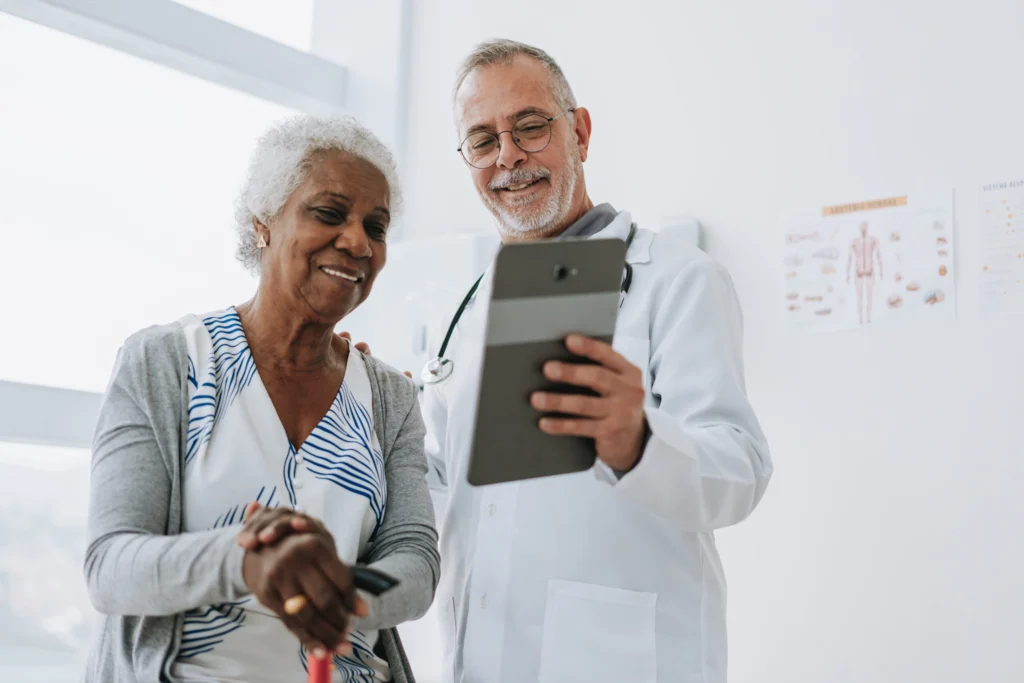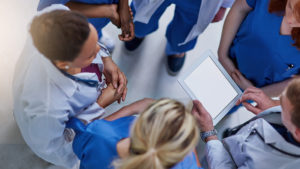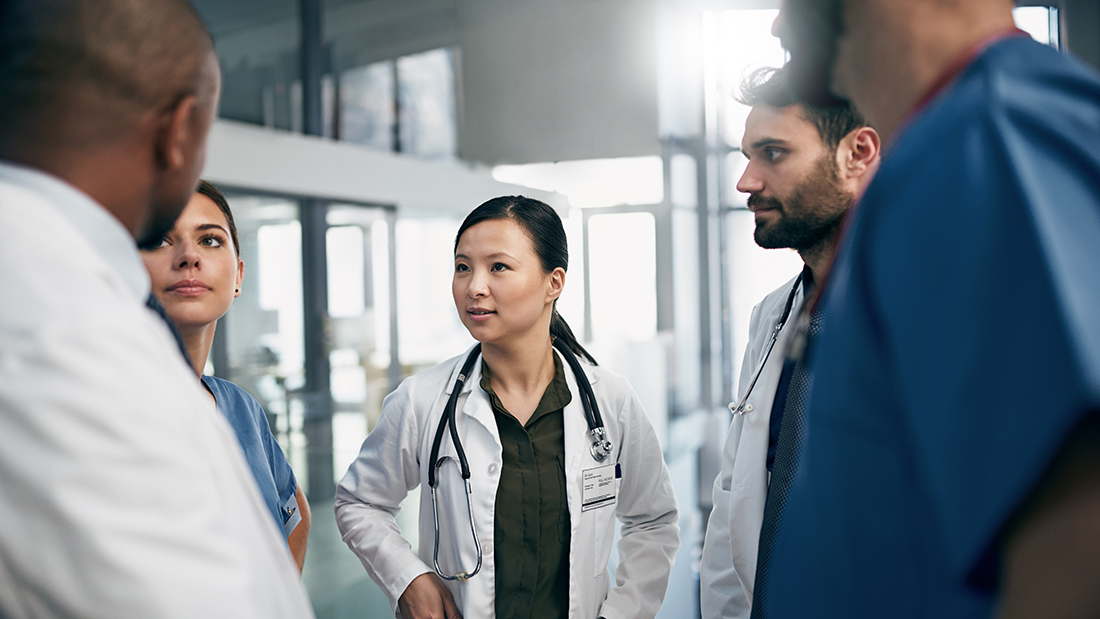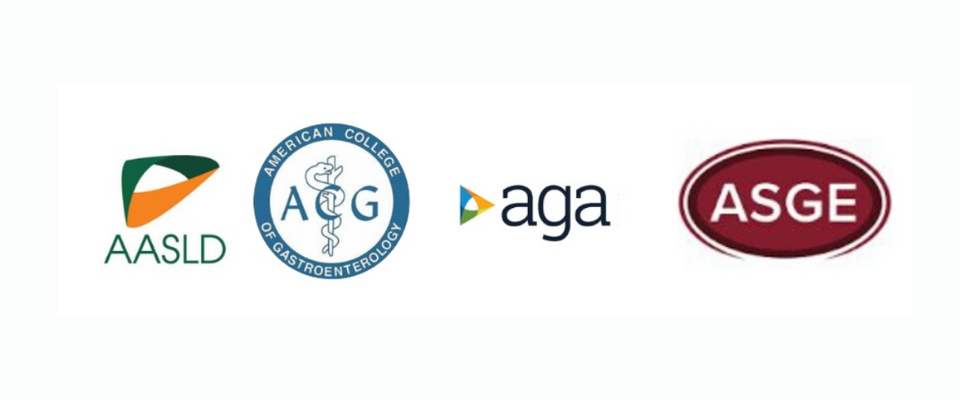The situation involving the COVID-19 pandemic continues to evolve. There is recent evidence suggesting the potential for coronavirus transmission through droplets and perhaps fecal shedding1,2 posing potential risks during endoscopy and colonoscopy to other patients, endoscopy personnel and ourselves.
We provide below important information as well as recommendations to consider in your institutions and practices that provide endoscopy and outpatient GI services:
What we know:
1. Cough, fever, fatigue or sore throat are the most common symptoms in adults.
2. The incidence of GI symptoms including nausea and/or diarrhea are uncertain with some reports below 5% and others at 50%.3,4 There have been some reports of isolated diarrhea preceding cough and fever.
3. The virus may be present in GI secretions and viral RNA is detectable in stool. Gastrointestinal infection and potential fecal-oral transmission must be considered.
4. Asymptomatic spread can occur during the prodromal phase (the mean incubation period is ~5 days, with a range of 0-14 days), with viral shedding greatest when symptoms begin.
5. Abnormal liver enzymes are observed in 20-30% of persons with COVID-19 infection.
6. Leukocyte counts drop in persons with COVID-19 infection, and elevated WBC is a poor prognostic sign.
7. Older people and those listed by the CDC as vulnerable populations, including severe chronic health conditions, such as heart disease, lung disease, diabetes, decompensated cirrhosis, HIV with low CD4 counts, and immunosuppression, (including liver and other solid organ transplant recipients) are at higher risk of developing more serious illness. Pregnancy may be a risk.
8. Best protection against virus transmission:
- Wash hands
- Don’t touch your face
- Cough etiquette
- Social distancing
- Avoid crowds
Recommendations for GI endoscopy and clinic practices:
1. Strongly consider rescheduling elective non-urgent endoscopic procedures. Some non-urgent procedures are higher priority and may need to be performed (examples include cancer evaluations, prosthetic removals, evaluation of significant symptoms). Classification of procedures into non-urgent/postpone and non-urgent/perform may be useful. Of note, the Surgeon General on 3/14/20 advised hospitals to postpone all elective surgeries.5
2. Pre-screen all patients for high risk exposure or symptoms. Patients should be asked about history of fever or respiratory symptoms, family members or close contacts with similar symptoms, any contact with a confirmed case of COVID-19, and recent travel to a high-risk area. Avoid bringing patients (or their escorts) into the medical facility who are over age 65 or have one of the CDC recognized risks listed above.
3. Make sure appropriate personal protective equipment (PPE) is available and worn by all members of the endoscopy team: gloves, mask, eye shield/goggles, face shields, and gown6 (we recommend reviewing the in-press that just appeared in GIE and there may be others that we will keep our members appraised of).
4. Know how to put on and take off PPE appropriately (https://www.cdc.gov/hai/pdfs/ppe/ppe-sequence.pdf).
5. Check body temperature of the patient upon arrival at endoscopy unit or clinic.
6. Keep all patients at an appropriate distance from each other (6 feet is recommended) throughout the entire time in the endoscopy unit.
7. Conservation of PPE is critical. Only essential personnel should be present in cases. Consider extended use or reuse of surgical masks and eye protection in accordance with hospital policies.
8. For COVID-19 positive patients, or those awaiting test results, isolation precautions should be taken with procedures performed in negative pressure rooms.
9. Consider phone follow-up at 7 and 14 days to ask about new diagnosis, or development of symptoms, of COVID-19.
10. Centers should strategically assign available personnel. It is important to minimizing concomitant exposure of those with similar or unique skill sets. Non-physician practitioners and fellows that cannot participate in cases may be helpful screening and triaging patients, or performing virtual visits.
11. For elective office visits, consider offering elective office visits remotely, via telemedicine if possible, in order to decrease the office density of patients, and provide needed care to patients who are less willing or unable to travel.
12. It is important to address our collective staff needs and institute policies that protect our workforce.
13. Patients on immunosuppressive drugs for IBD and autoimmune hepatitis should continue taking their medications. The risk of disease flare outweighs the chance of contracting coronavirus. These patients should also follow CDC guidelines for at-risk groups by avoiding crowds and limiting travel.
Given the evolving and fluid nature of the situation, institutions, hospitals and clinics have also been formulating their own local guidelines, so we urge you to follow the evolving CDC recommendations and your local requirements.
We plan to work with you and provide updates as appropriate.
The purpose of this communication is to jointly provide you with up to date COVID-19 information in order to maintain the highest level of health and safety for our patients, staff, community, and ourselves.
We wish you, your families and loved ones strength and good health as we overcome this global pandemic together.
Hashem B. El-Serag, MD, MPH
AGA President
Jorge A. Bezerra, MD
AASLD President
Mark B. Pochapin, MD
ACG President
John J. Vargo, II, MD, MPH
ASGE President
Additional sources of information:
Centers for Disease Control and Prevention (CDC):
- This index provides links to most of the pertinent details regarding COVID-19, including steps health care facilities can take to prepare for COVID-19 in the community and interim guidance for health care facilities: https://www.cdc.gov/coronavirus/2019-ncov/healthcare-facilities/index.html.
- This link outlines the basic “Steps to prepare” for COVID-19 arrival in your community: https://www.cdc.gov/coronavirus/2019-ncov/healthcare-facilities/steps-to-prepare.html
- This link provides further specific “interim guidance” for health care facilities, including plans for preparation and activation in the even to community spread in your region, for both inpatient, outpatient and long-term care facilities: https://www.cdc.gov/coronavirus/2019-ncov/healthcare-facilities/guidance-hcf.html
- This link provides further connections to interim guidance for professionals: https://www.cdc.gov/coronavirus/2019-ncov/hcp/index.html
- Potential staff exposure: https://www.cdc.gov/coronavirus/2019-ncov/hcp/guidance-risk-assesment-hcp.html
- CDC Community Mitigation Strategies: https://www.cdc.gov/coronavirus/2019-ncov/downloads/community-mitigation-strategy.pdf
References:
1. Gu J, Han B, Wang J. COVID-19: Gastrointestinal manifestations and potential fecal-oral transmission. Gastroenterology. 2020 Mar 3. pii: S0016-5085(20)30281-X. [Epub ahead of print] https://doi.org/10.1053/j.gastro.2020.02.054
2. Xiao F, Tang M, et al. Evidence for gastrointestinal infection of SARS-CoV-Gastroenterology. 2020 Mar 3. pii: S0016-5085(20)30282-1. [Epub ahead of print] https://doi.org/10.1053/j.gastro.2020.02.055
3. Huang C, Wang Y, Li X, Ren L, Hao J, Hu Y, et al. Clinical features of patients infected with 2019 novel coronavirus in Wuhan, China. Lancet 2020; 395: 497-506 https://doi.org/10.1016/S0140-6736(20)30183-5
4. http://www.worldendo.org/2020/02/05/weo-alert-wuhan-proposal-for-safety-in-digestive-endoscopy/
5. https://www.politico.com/news/2020/03/14/surgeon-general-elective-surgeries-coronavirus-129405
6. Repici A, Maselli R Matteo, R, et al. Coronavirus (COVID-19) outbreak: what the department of endoscopy should know. Gastrointest Endosc, March 2020 [Epub ahead of print] https://doi.org/10.1016/j.gie.2020.03.019












